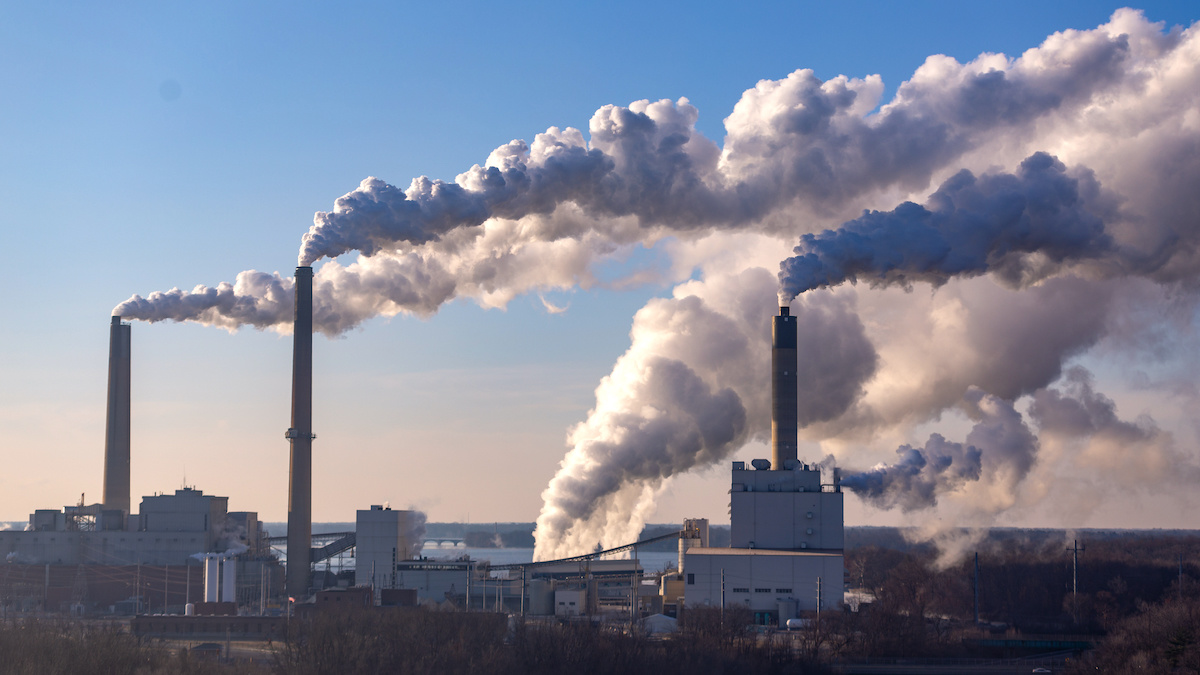

A newly developed catalyst would transform carbon dioxide from power plants and other sources into ethanol. DWalker44 / E+ / Getty Images
Researchers at the Department of Energy’s Argonne National Laboratory have discovered a cheap, efficient way to convert carbon dioxide into liquid fuel, potentially reducing the amount of new carbon dioxide pumped into the atmosphere.
The method, published in Nature Energy in late July, uses a copper-based catalyst to transform carbon dioxide into ethanol, which is used in almost all U.S. gasoline.
“The process resulting from our catalyst would contribute to the circular carbon economy, which entails the reuse of carbon dioxide,” study coauthor and Argonne senior chemist Di-Jia Liu explained in a press release.
Catalysts are an important tool in industrial processes used to speed up chemical reactions, Argonne National Laboratory explained. In conventional energy, they are used to convert heavy oil into jet fuel and gasoline. The new catalyst would be put to less carbon-intensive purposes by converting the carbon dioxide emitted by fossil-fuel plants or alcohol fermentation into ethanol that could be either recycled as fuel or used to make chemicals, drugs or cosmetics. Liquid fuel can also be used to store the output from renewable energy for future use, the paper explained.
In a 2019 deep-dive for Vox on different potential uses of carbon dioxide, David Roberts pointed out that it is always better from a climate crisis standpoint to electrify energy use directly rather than using that power to convert carbon dioxide into fuel. However, carbon-based fuels could be an important tool for reducing the emissions of sectors that are hard to decarbonize otherwise, like industry. They do not remove carbon dioxide from the atmosphere, but they do reduce the amount of planet-warming emissions relative to what they would have been if conventional fuels were burned.
“Carbon-neutral liquid fuels for sectors that are difficult to decarbonize are both a large market and a key piece of the decarbonization puzzle,” Roberts wrote.
But turning carbon dioxide into a different molecule is typically both energy intensive and expensive because carbon dioxide is so stable, according to the Argonne National Laboratory: The new catalyst, however, is highly efficient.
The lab explained how it works:
The team’s catalyst consists of atomically dispersed copper on a carbon-powder support. By an electrochemical reaction, this catalyst breaks down CO2 and water molecules and selectively reassembles the broken molecules into ethanol under an external electric field. The electrocatalytic selectivity, or “Faradaic efficiency,” of the process is over 90 percent, much higher than any other reported process. What is more, the catalyst operates stably over extended operation at low voltage.
Because the process can work at low pressures and temperatures, it can be paired with renewable energy technologies. This is because it will be able to stop and restart easily in response to a changing power supply.
“We could couple the electrochemical process of CO2-to-ethanol conversion using our catalyst to the electric grid and take advantage of the low-cost electricity available from renewable sources like solar and wind during off-peak hours,” Liu said.
- Jet Fuel From Sugarcane? It's No Flight of Fancy - EcoWatch
- What Role Can Biofuels Play in Reducing Greenhouse Gas ...
- New Canadian Facility to Produce Renewable Fuel From Air - EcoWatch

 233k
233k  41k
41k  Subscribe
Subscribe 